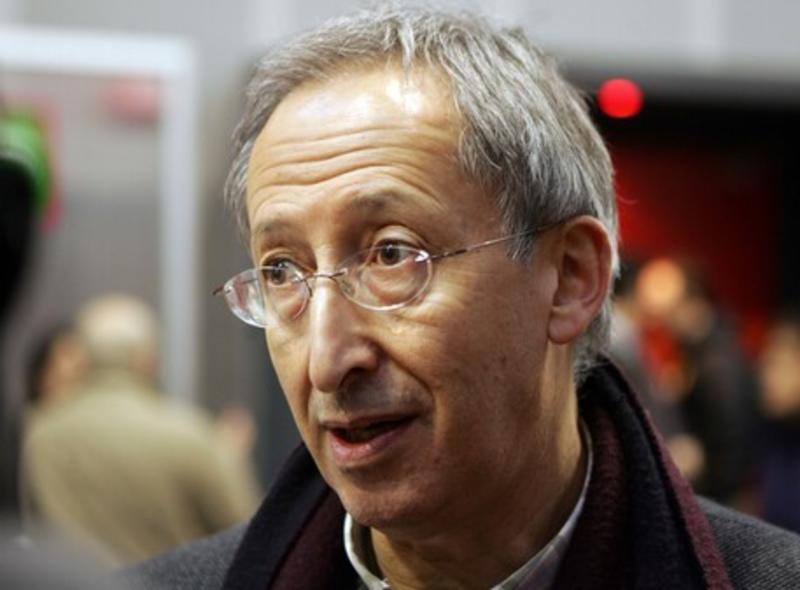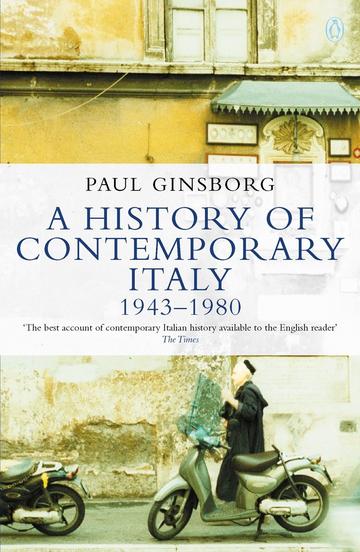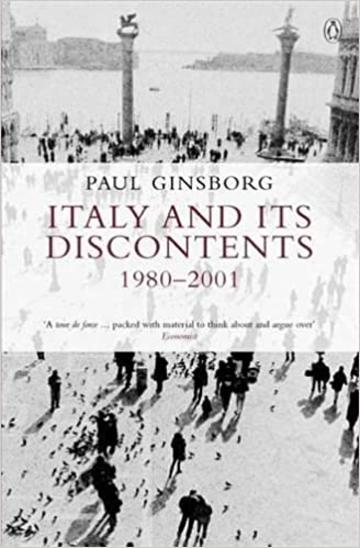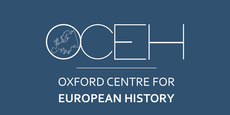Remembering Paul Ginsborg (1945-2022)
Obituary by Cesare Vagge, DPhil Student, Merton College



Paul Ginsborg, arguably the most well known Anglophone historian of contemporary Italy, passed away on 11 May 2022 aged 76. Born in London in 1945 into a Jewish family, in 1966 Ginsborg graduated in History from Queen’s College Cambridge, where he remained as a Research Fellow until 1971. Between 1971 and 1977 he taught at the University of York, and subsequently moved to Italy, where he lectured at the University of Turin until 1980. Following his return to Britain in 1980 he became a lecturer at the University of Cambridge, holding a Fellowship at Churchill College until 1991. In the same year Ginsborg moved to Florence, where he held the post of Professor of Contemporary European History until his retirement in 2015.
Other than continuing the tradition of Anglophone scholarly attention for the history of modern Italy established by Christopher Seton-Watson and Denis Mack Smith, Ginsborg combined his academic interests with an active engagement in contemporary Italy’s political and cultural debates. Similarly to other British historians that built a strong connection with the Italian peninsula such as Eric Hobsbawm and Donald Sassoon, Ginsborg also entertained a strong relationship with the Italian left, becoming one of its chief “organic intellectuals”. Rendering this possible was modern Italian political culture, which does not confine academics to universities, but seeks to transform them into “public intellectuals”, tasked with interpreting the political zeitgeist and inspiring institutional and social reforms. As a result, the Italian book launches of specific historical works are not relegated to sober seminar rooms, but are often major public events taking place in city halls and opera houses. Ginsborg’s Italian academic career was no exception to this trend.
Ginsborg’s greatest contribution to our understanding of the Italian 20th century is his History of Contemporary Italy (1990), covering the development of the Italian democratic polity from the Civil War of 1943-45 until the mid-1980s. As Michael Foot pointed out in his book review, Ginsborg was able to combine his study of post-war Italy’s turbulent political history with a sophisticated analysis of socio-economic and cultural national trends. His interpretation of the political projects that characterised the evolution of the so-called “First Republic” (1946-1992) was not a mere work of intellectual history. Ginsborg did not analyse major political initiatives such as the Communists’ “Italian road to Socialism” or the Christian Democrats’ “corrective” reformism in purely abstract philosophical terms. These projects were instead presented as responses to tackle the pressing structural issues that afflicted modern Italy’s socio-economic, cultural, civil and administrative life, and their success was measured against their capacity to curb the conservative forces that had survived the fall of Fascism.
The early chapters of Ginsborg’s monograph cover the birth of modern Italian democracy under the banner of anti-Fascism, as well as the Reconstruction process and the so-called “economic miracle” of the late 1950s and early 1960s. Though not rigorously planned by the new Italian state, Ginsborg acknowledged that post-war reconstruction and subsequent economic development were largely due to the modernising efforts of state technocrats such as Enrico Mattei, who took charge of the sectorial planning agencies inherited from the Fascist regime. Italy’s partial post-war socio-economic modernisation did not however bring an end to the peninsula’s structural problems: north-south imbalances, widespread unemployment, the lack of modern public services, administrative inefficiency, as well as widespread clientelism, familism, corruption and the permanence of civic irresponsibility.
According to Ginsborg, Italy’s post-war political leadership elaborated a series of alternative reformist solutions to address these issues. On the one hand, the Communists and the Socialists saw a solution in overtly anti-capitalist “structural reforms” such as new industrial nationalisations and the introduction of new national planning bodies. On the other hand, enlightened Christian-Democrats and other non-Communist progressives advocated “corrective reforms”, mainly centred upon bending the industrial strategies of existing public enterprises to the imperatives of full employment and regional development. Two of the most important phases of Italy’s post-war history, the “centre-left” governments of the 1960s and the “historic compromise” between the Christian Democrats and the Communists in the 1970s can be seen as attempts to find a middle ground between structural and corrective reform. Ginsborg highlighted undeniable achievements of the 1960s-1970s such the institution of regional governments, the rationalisation of urban planning and the creation of Italy’s national health service. Yet he also emphasised the reformers’ incapacity to close the developmental gap between the North and the South, as well as their ineffectiveness in reforming the polycentric and chaotic Italian administrative apparatus.
According to Ginsborg, the failure of these reformist experiments had to be attributed to two main factors. On the one hand a large section of the Christian-Democratic elite – incarnated by the cryptic Aldo Moro and the sinister Giulio Andreotti –had been the key beneficiary of the very structural problems targeted by Italian reformists. On the other hand, post-war Italy lacked of a “reflexive middle-class”, capable of developing a modern civic culture, which extended beyond the maximisation of individual profit and familial well-being. The endurance of “familism” hence lay at the heart of Italian society’s resilience to the progressive attempts to reform it and transform it into a modern democratic polity, populated by socially aware and self-critical citizens, rather than by individualistic, and politically passive self-interested consumers.
The successful rise to power of controversial political figures such as Bettino Craxi and Silvio Berlusconi in 1980-2000, Ginsborg argued, was precisely due to the resilience of these social and cultural trends. Craxi and Berlusconi’s explicit praise for individual achievement, consumption, hedonism and leisure indeed resonated with a middle-class that had no intention to accept individual “austerity” in exchange for social progress. Their political engagement essentially amounted to anti-Communism and defence of their privileges from reformist attacks, whether from leftists or progressive centrists. In the atmosphere of the “roaring 80s”, anti-consumerist appeals of left politicians such as the Communist leader Enrico Berlinguer only seemed anti-modern and anachronistically moralistic. As Ginsborg pointed out in his Italy and his Discontents (2001), the exasperation of inflation, public debt, tax evasion and political corruption in the late 1980s and early 1990s led Italian reformists into thinking that only the “external constraint” of European integration could force Italy to undertake the reforms necessary to address its structural problems. This new type of corrective reform, championed once again by heirs of the Communist left and the enlightened ranks of the former Christian-Democrats, was not centred upon dirigisme and nationalisations, but on neo-liberal measures. Privatisations, administrative de-centralisation and deflationary cuts in public spending became the key words of the Italian left of the 1990s.
The “external constraint” allowed the Italy’s centre-left governments of the late 1990s to reduce inflation and significantly improve the country’s budgetary situation. Nevertheless, as Ginsborg pointed out, several of these measures were imposed from above, with the aid of pro-European technocratic figures associated with the Italian central bank such as Carlo Azeglio Ciampi. This facilitated a perception of the Italian post-Communist left as an elitist and anti-national force, bent on imposing significant sacrifices on the middle-classes for the sake of achieving unpopular reforms imposed by unelected technocrats. The chief beneficiary of this narrative was Sivlio Berlusconi, who dominated Italian politics in 2001-2013. Rhetoric aside, current populist leaders such as Matteo Salvini should be seen as Berlusconi’s political heirs, determined to inherit the support of the very same conservative forces.
Ginsborg’s analysis hence reminds us that several of the political convulsions undergone by Italy in the early decades of the 21st century should be seen as a clash between the “external constraint” and the resilience of the conservative structural forces he identified in his two works on contemporary Italy. Yet, he also shows that if the enforcement of the external constraint is not mediated through democratic participation and is excessively delegated to the grey eminences of the Bank of Italy and the European Commissions, the key beneficiaries of popular discontent will be populist opportunists bent on exploiting the formidable resilience to change exhibited by large sections of Italian society. The current government of Mario Draghi, a technocratic veteran of both the latter institutions, and a champion of the “external constraint”, is already facing these obstacles in its effort to implement the post-COVID recovery programme. Upon his passing, Ginsborg’s works hence still represent a valuable starting point to comprehend the nature of Italian society, its contradictions and the impediments that future reformers will encounter in their attempt to either modernise Italy’s socio-economic structures and revitalise its democratic institutions.



